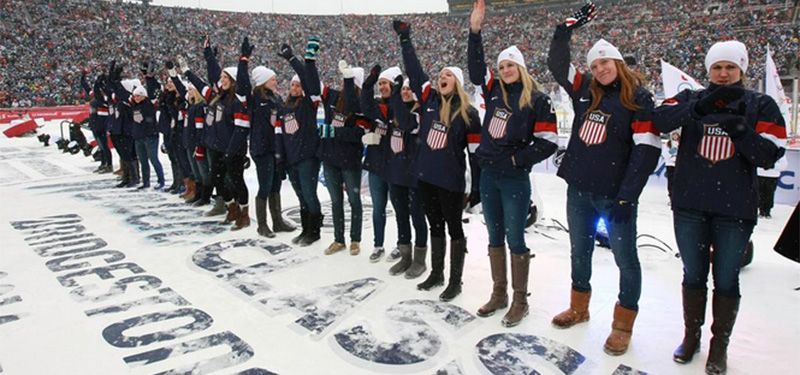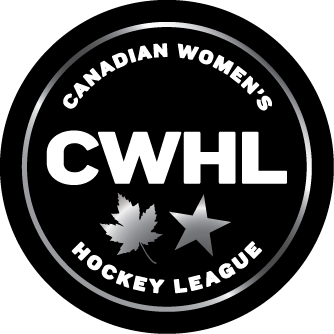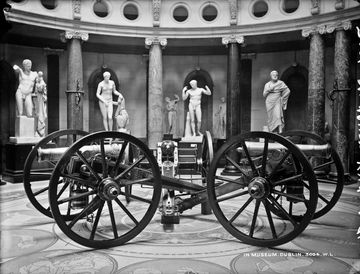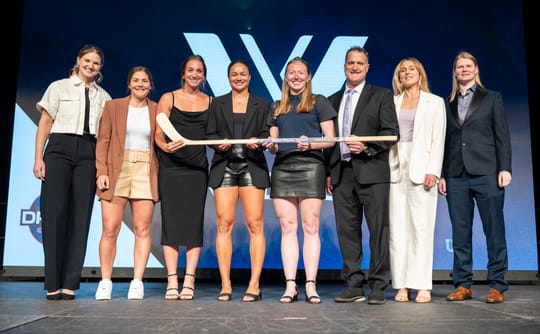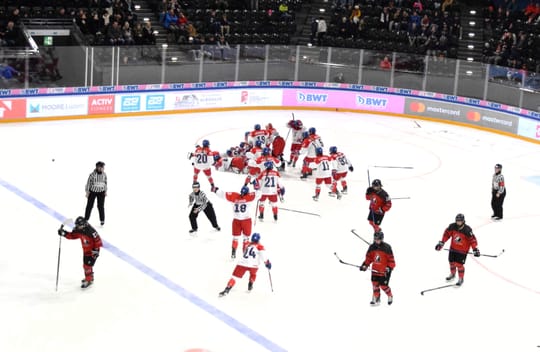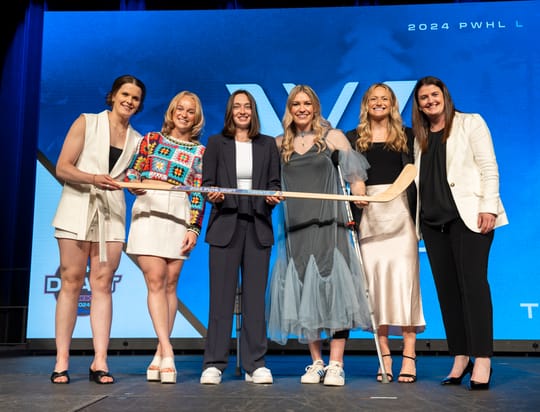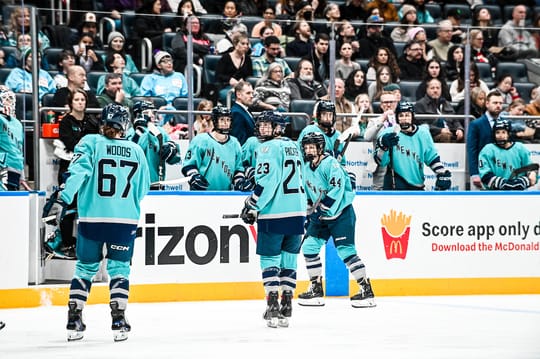Nancy Theberge's book Higher Goals: Women's Ice Hockey and the Politics of Gender was published in 2000. Seventeen years later, it's intriguing to read her book and see what's changed -- and what hasn't.
In many ways, the status of women's ice hockey in the world has vastly improved since 2000. At the same time, however, many issues that were prevalent then remain just as relevant today.
"Female players are still largely looked upon as the little sisters who don't really belong in hockey."
In her book, Theberge follows a women's hockey team called the Blades between 1992 and 1994. She discusses various social topics, including gender, sexuality, and equality, through the lens of the team. Everything she discusses is specific to the Blades, but much can also be applied to women's ice hockey in general.
In some ways, women's hockey has taken leaps and bounds since 2000. The CWHL and the current-day NWHL, both professional women's hockey leagues, were not even blips on the radar. The original National Women's Hockey League (1999-2007) was in its infancy, with international stars Angela James and Karen Nystrom among those on its roster. The Minnesota Whitecaps, another prevalent women's hockey team, weren't founded until four years after the book was published. Women's hockey at the Olympics was new back then, as it was only introduced in 1998.
But in other ways, women's hockey and those involved with it are facing some of the same issues they did in 2000.
"In hockey, the struggle to negotiate material and ideological barriers to women's participation is powerful and ongoing."
Women's hockey players, and female athletes in general, still face what Theberge calls the "myth of female frailty," or "the idea that women are weak and incapable of strenuous physical activity," as well as the challenge that men's sport is often seen as the only "real" sport. Many still see women as outsiders in the world of sports, but this line of thought is challenged every day in which leagues like the NWHL, CWHL, WNBA, and NWSL exist.
One challenge that Theberge discusses is the team's games and practices often being scheduled for off-times. This includes late-night practices, such as those that are often held by CWHL and NWHL teams, and games on Sundays. Logically, these time slots are often used to accommodate players with full-time jobs. Until female players are able to live off of their hockey careers, it seems likely that this trend will continue.
The Blades team profiled in the book was coached solely by men, a feat that Theberge briefly mentions. Men held all the positions of power, which is a pattern in women's sport. Players on the Blades said they thought this reflected "women's historical marginalization in the sport [of women's hockey]" and said it was something that would change as current and future generations retire and take on leadership roles. This topic has been discussed recently in regards to the NWHL, which has all male coaches heading into the upcoming season, and amidst Kelley Steadman's retirement from professional hockey and transition to coaching.
"The players also felt keen responsibility to serve as role models and ambassadors for women's hockey."
Theberge doesn't shy away from discussing the politics of gender and sexuality as they relate to women's hockey. The Blades' rink was never flooded by a zamboni during games, whereas men's games received this treatment. This was seen as an affirmation of the players' belief that "women's hockey at the elite level failed to receive the respect it deserves," despite the fact that these women were just "as committed as the best male players and deserving of more support."
In addition, Theberge discusses how the Blades rarely saw media presence at their games and saw very little media coverage. Although some media outlets are making an effort to fairly cover women's sports (including The Victory Press), many mainstream media outlets still provide inconsistent or lackluster coverage. On the other hand, men's sports by and large receive more media coverage, and the number of premium, subscription-based services that cover men's sports behind a paywall is also growing. The persistent deepening of men's sports coverage, its elevation, and its prestige and meta-commentary, is almost entirely absent from coverage of the women's game from national or "premium" outlets. The process is still ongoing for coverage to exist at all.
This extends to other areas, including women's hockey relationships with hockey associations. At the time, the Blades felt that they received insufficient commitment from the Canadian Hockey Association. When reading this part of the book, I couldn't help but relate their dififculties to the USWNT's struggle to gain fair and adequate support from USA Hockey.
Another interesting side to this story: the Blades' emphasized femininity, an attempt to backlash against the "image problem" in women's hockey: "the view that women hockey players are mannish and by extension, lesbian." Theberge later discusses the presence of out lesbian players on the team. Stephen, one of the coaches, had previously not allowed these players on the team.
The author doesn't go into specifics, but says that two factors were part of Stephen's "learning experience" in allowing lesbian players on the team. First, his players told him he needed to change. Second, he eventually came to the realization that he was putting his team at a competitive disadvantage by excluding these players. Over time, he came to welcome both the lesbian players and their partners into the community.
Despite this, interactions between Stephen and the players were sometimes marked by what Theberge calls "a playful heterosexuality." She references a Valentine's Day when Stephen called all of the players his "valentine" and gave them chocolates, and another discussion where he joked that his dance card for a fundraising dance was filling up.
Theberge says: "It is notable that these exchanges involved both heterosexual and lesbian players. In incidents like these, the sexuality of lesbian players was rendered invisible...The team, lesbians and heterosexuals alike, went along with these exchanges in a manner that seemed relaxed and friendly."
While players may comment on their locker room atmosphere, we know as media that when we're in the room, it's not the same as if it were private. Many athletes speak to a good team environment and camaraderie, but generally avoid discussing their personal lives for fear of politicizing the situation. Speaking up about their personal lives or beliefs can lead to penalties, including monetary fines, suspensions, sponsor withdrawals, and negative press.
Consider the WNBA players who were fined in July 2016 after wearing black warm-up shirts to protest police-involved shootings. Or the varsity football player who was suspended and placed on a disciplinary contract for refusing to stand during the US national anthem. NFL player Colin Kaepernick, who took a knee for the national anthem prior to games last season, remains without a contract for the upcoming season; some reports suggest this may be due to his political beliefs and his choice to express them. Back in 2016, NFL player Brandon Marshall was dropped by sponsor Air Academy Federal Credit Union after he knelt in protest during the national anthem.
One must also consider the progression of society; in the 1990s, anti-gay politics ran rampant in the United States. In 2017, the struggle continues in many ways, but there has been movement in some areas, including the legalization of sexual activity between consenting adults of the same sex (2003) and the outlawing of discrimination based on sexual orientation in 22 states. However, as evident in the above examples, athletes are still facing consequences for speaking out about anything that is important to them. If NFL athletes can have their careers derailed and overwhelmed by simply expressing a viewpoint, one wonders how professional women athletes can even get out of the gate to be recognized as professionals when their existence is inherently political.
"By their very presence, women in sport violate cultural expectations. The burden that women face is not compliance but making a place in the traditionally masculine preserve of sport."
For a long time, men's sport has been seen as the "real" sport, whereas women's sport is often looked at simply as lighter entertainment. The masculine context of sports is largely a western invention. According to this VERDICT piece, sports were introduced in Americans schools "out of fear that boys were becoming too womanly when the shift from an agrarian to an industrial labor force, along with limits on child labor, left them at their mothers' apron strings than their fathers' boots." Competitive leagues were established around the country in the early 1900s as a way to teach boys "American values" such as cooperation, hard work and respect for authority. Our ideas of what sport is are informed by cisgendered, binary expectations, and are often invoked as a form of social control, a euphemism for law and order. These are ideas perpetuated of how the world "should" be, without questioning why that is or how we made that assumption.
Society has certainly progressed in the 17 years since Theberge's book was published, but the progression of women's sport is intrinsically linked to societal values and opinions on feminism, women's strength/physicality, and breaking down traditional gender barriers. Looking at Theberge's book in 2017 provides a stark reminder that many social issues stay the same at their core despite a wildly shifting cultural context, and women's hockey is no exception.
If you're interested in reading Higher goals for yourself, you can purchase a copy on Amazon, or do what I did -- request it from your local library!
